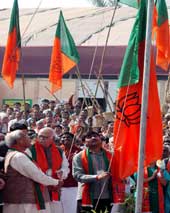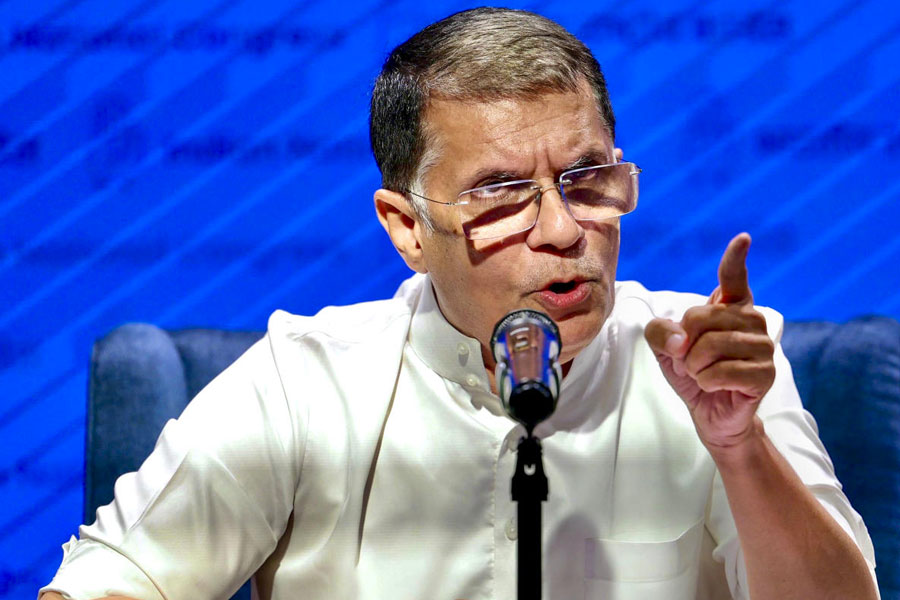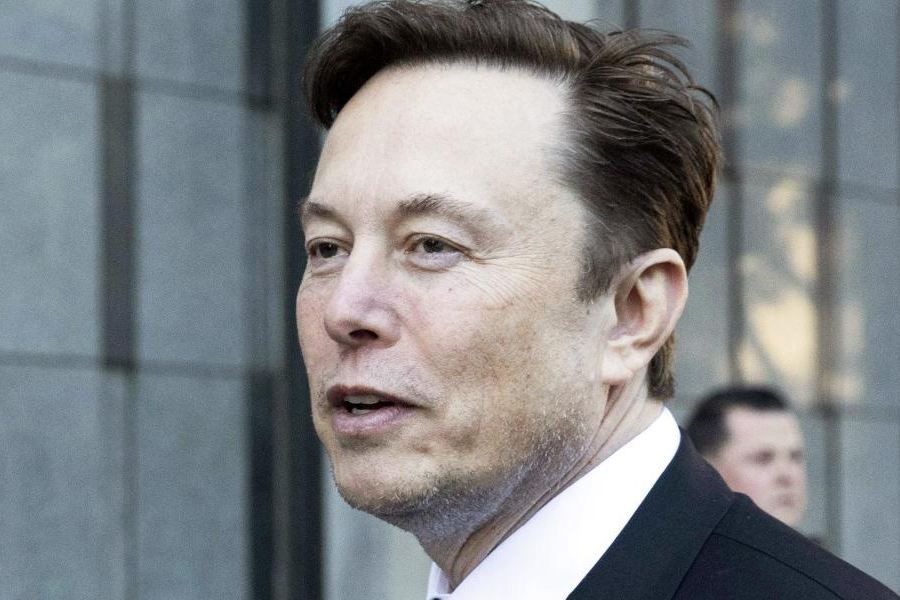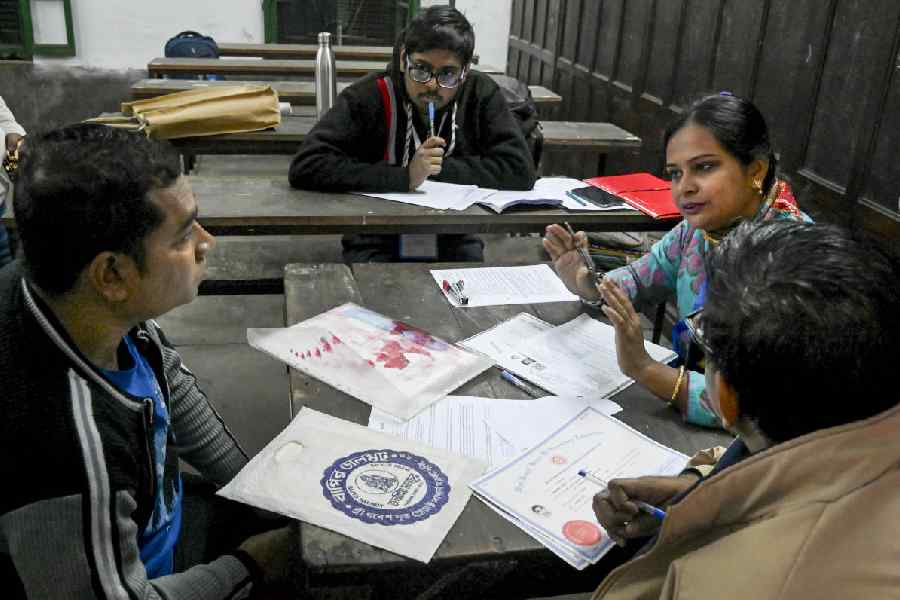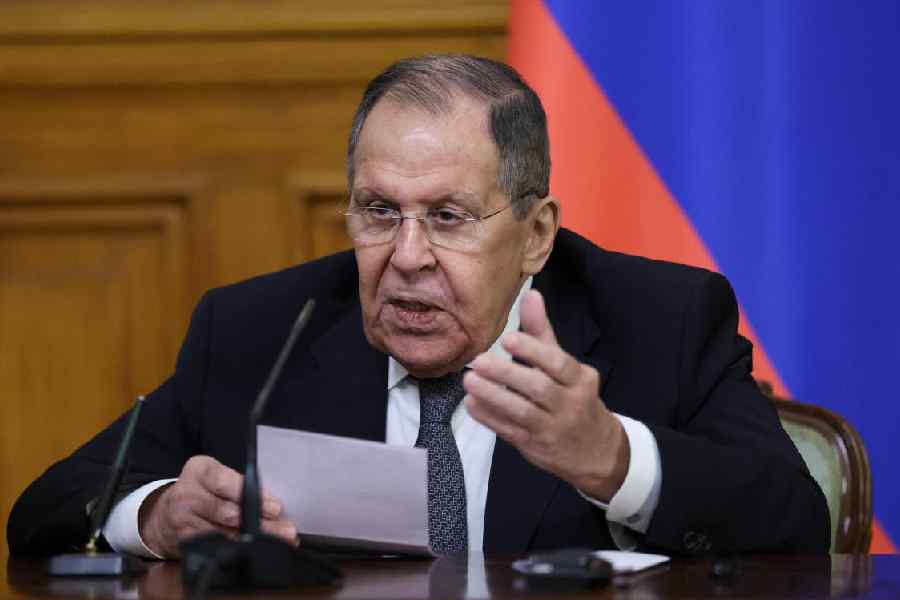|
|
| BJP campaign, Hardwar, 2007 |
India After Gandhi: The History of the World’s Largest Democracy By Ramachandra Guha, Picador, Rs 695
The homely Bengali saying that you don’t need a mirror to see the bracelet on your wrist comes repeatedly to mind ploughing through these 900 pages. True, the mirror illuminates intricacies of design that may not be obvious to the naked eye; true also, Ramachandra Guha’s magnum opus is couched in always pleasant and sometimes elegant prose. But why this gargantuan regurgitation of facts with which we have lived all our lives? That question nagged me all the way to page 756 when suspicion became certainty. This book is not for you and me. It’s for Western, mainly American, readers for whom “The History of the World’s Largest Democracy” means an appropriately massive tome.
The main title cashes in on a globally recognizable icon without convincingly establishing that Gandhi (not even a four-anna member of the Congress) marked a chronological or qualitative watershed in the Indian saga. The examples used are a further giveaway. Most Indian readers have a fair understanding of the “intellectual or moral” distance between Jawaharlal Nehru and Indira Gandhi, or, more obscurely, between B.R. Ambedkar and Mulayam Singh Yadav. But few in this country will at once be able to pinpoint exactly how George W. Bush differs from Abraham Lincoln. It’s obviously the other way round in the United States of America, and Guha chooses the Lincoln-Bush contrast to illustrate differences between Nehru and his daughter, and Ambedkar and Mulayam.
Then again, how many readers will grasp that Guha wants to convey the enormousness of the honour bestowed on A.R. Rahman when he was invited to conduct the Birmingham Symphony Orchestra by breathlessly telling us that its “first conductor had been Sir Edward Elgar”? If Indian readers are not utterly bewildered by the revelation, they might assume that Rahman was honouring the unknown (to them) Elgar!
Writing for foreigners can stand on its head the rule that the purpose of examples and comparisons is to explain and simplify. More seriously, it means striking a note of patriotic piety. The great gods of Democracy and Secularism receive the obeisance that is their due; so does the linkage between parliamentary politics and the market economy. All is for the best in this best of all possible Indias. The Kashmir and Nagaland problems are described well. But when it comes to Sikkim, Guha betrays his own scholarship by relying only on the testimony of an important — perhaps the most important — player on the Indian side.
Glowing homage to J.B.S. Haldane, the British biologist, highlights the Panglossian aspect. We are dizzy with delight when eminent whites choose to live in our midst, take up Indian citizenship and call India “a wonderful experiment” and “the closest approximation to the Free World”. But objectivity demands some mention of the embarrassing personal controversies in which Haldane and his wife were involved in Britain before they decided to up anchor and let down new roots here. One misses critical objectivity even when — perhaps especially when — the writer appears to be distancing himself from the claims of state publicists. There are more complex explanations for the Kamaraj Plan than the nobly simple one Guha offers.
The book’s great merit is that for Rs 695 you get a sort of Britannica of all you ever wanted to know but were too lazy to look up. I shall treasure it on my shelves for the sheer wealth of information. How else would I have known that Dwarka Chatterjee had the wit and wisdom to write of India, “We are, of course, on the side of God. But is God on our side?” Or that Mohan Lal, an unknown Bhopal cloth merchant, challenged five prime ministers wearing a wooden crown and garland, and tinkling a bell?
But I would like to know the source of the report of a Gandhi cap being foisted on Sir Frederick Burrows. Does the “motley character of the gathering” when C.R. Rajagopalachari was sworn in explain the disappearance from Calcutta’s Raj Bhavan of the silver, crystal and porcelain visible in old pictures? Citing Rafiq Zakaria, Guha attributes the vision of a confederal subcontinent to Arthur Moore of The Statesman, but S. Gopal tells us that Nehru brought it up in conversation with Selig Harrison of The Washington Post. As for Bangalore’s ostentatious Vidhan Souda, S. Nijalingappa once told this reviewer that K. Hanumanthaiya built it to demonstrate that power had moved from the palace, not to upstage the High Court, as Guha says. According to Nijalingappa, Hanumanthaiya ran out of funds which explains the small dome perched uneasily on the colossal structure.
The undergrowth of history bristles with fascinating controversies that are all the more appealing when the main story has been told and retold many times. Guha’s indefatigable research produces many nuggets. As for a verdict, I can do no better than cite the author’s tale of the comic actor, Johnny Walker, answering every query with the reply, “Boss, phipty-phipty.” Guha is phipty-phipty successful. The book is eminently readable and unexceptionable in so far as it goes. But for all its length, it doesn’t go far enough in examining, analysing, explaining and — yes! — criticizing where criticism is called for.
That may not affect American sales unless you agree with the senator who said during the Watergate affair that the best way of keeping a secret is to publish it because no one reads. But he was thinking of Washington. For the rest of the US, I would go with Evelyn Waugh who advised Nancy Mitford to ignore Indian correspondents scrounging for a free copy but never Americans who might buy a hundred for Christmas. Judging by some of the reviews, I should imagine many times that number changed hands long ago.

